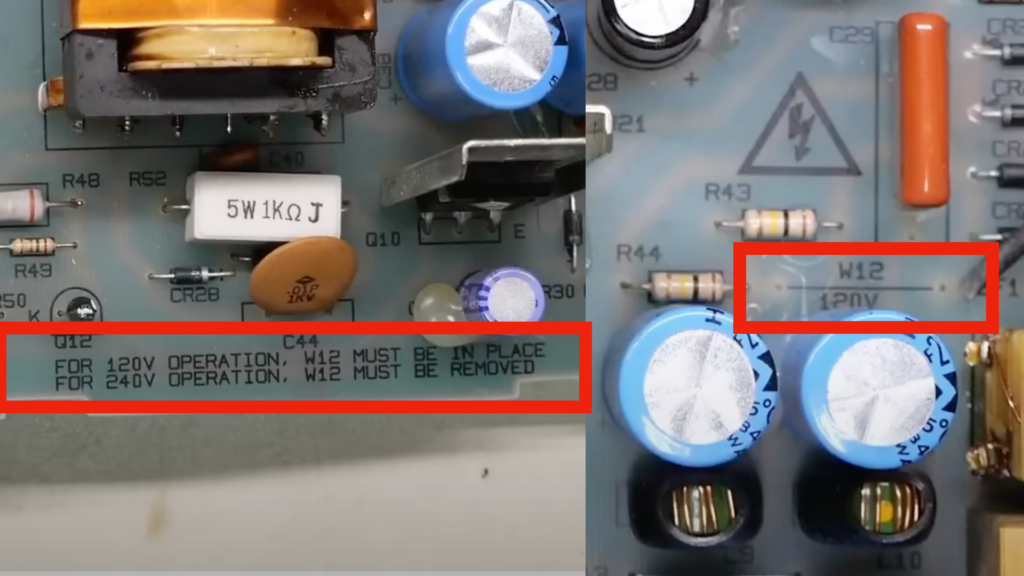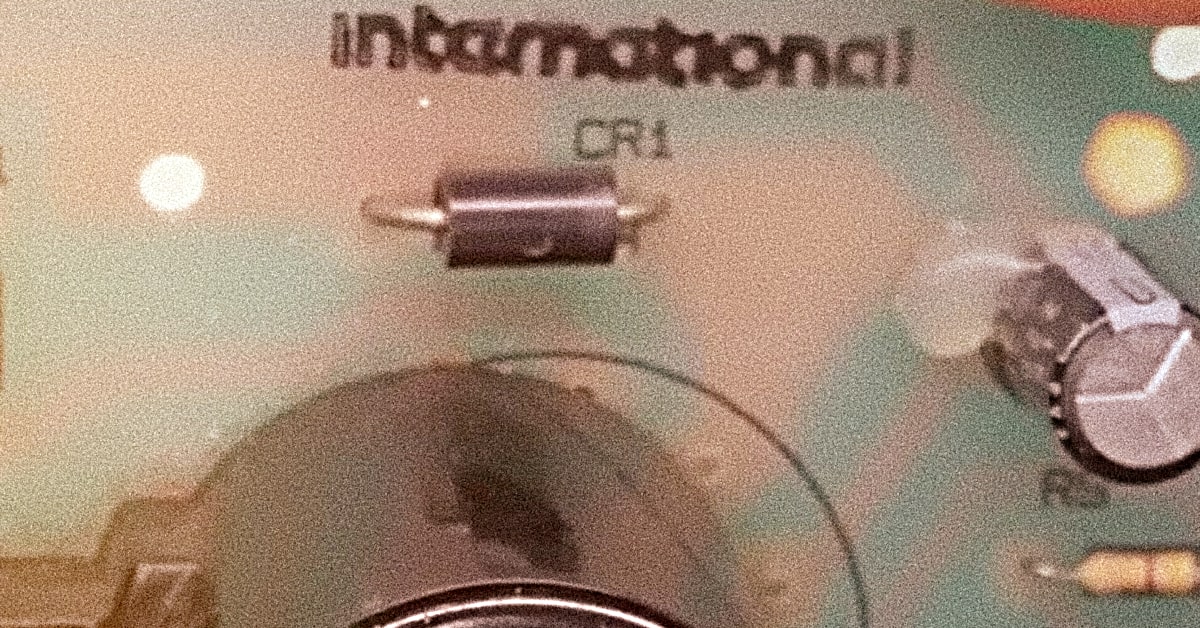I found a great little explanation by @kpanic23 in one of Adrian’s Digital Basement videos about the dual voltage (“international”) power supply in Mac 128, Mac 512 and Mac Plus computers:
In case anyone wonders how these dual supply voltage switch mode power supplies work: They’re basically 220-240V power supplies, only the big charge capacitor on the primary side is replaced with two capacitors in series. On 230V everything works as normal, the mains AC is rectified and goes to the capacitors. If you switch the power supply to 120V (either with an external switch or, like in this case, with a wire link), the center point of the two capacitors gets connected directly to the AC supply, before the rectifier. That way you turn the full bridge rectifier into two half-wave rectifiers, basically creating a voltage doubler circuit: the positive half wave of the input AC charges one capacitor with a positive voltage, the negative half wave charges the other one with a negative voltage (referenced to the center point). That way you get two capacitors charged to roughly 170VDC, which in series is equal to the roughly 340VDC you would get when rectifying 230VAC. It’s simple, elegant and quite ingenious!
@kpanic23
Adrian was troubleshooting a 240V analogue board from a Macintosh Plus and was suprised to find that the input voltage could be switched between 240V and 120V via a single jumper (W12):

@kpanic’s comment was a great insight into how Apple achieved their “international” power supply switching with just a jumper wire.
I also highly recommend Adrian’s video. Not only does he troubleshoot and repair the power supply, but he explains how a CRT works and how the analogue board in these early macs support this function. Very educational!
The Basic Layout of a Computer Power Supply
Most power supplies follow a basic pattern in their construction, but there were a few specifics design choices in the Macintosh line across the years:
- Power Input: The power supply has a power input connection that receives alternating current (AC) from a standard wall outlet. In many countries, this connection uses a three-pronged plug to ensure grounding. Grounding is required for the Macintosh 128K/512/Plus analogue board.
- Power Switch: There is usually a power switch on the back of the power supply. It allows you to turn the power supply on or off as needed. Early Macs have such a physical switch, although this later became secondary to a ‘soft power’, starting with the Macintosh AV series, which included models such as the Quadra 840AV and the Centris 660AV. This feature was introduced in 1993 and allowed the computer to be powered on and off using a key combination on the keyboard, marking a significant change from the previous physical power switches that were common on earlier models.
- Voltage Selector (Optional): Some power supplies include a voltage selector switch near the power input. This switch enables you to choose the appropriate input voltage based on your region’s electrical system. For example, you might switch between 110-120V and 220-240V options. As described above, early Macintosh computers used a jumpwe wire to set the voltage.
- Rectification: The AC input from the wall outlet is converted into direct current (DC) through a process called rectification. The power supply contains a bridge rectifier, which is a circuit that converts the AC voltage into a pulsating DC voltage.
- Filtering: Following rectification, there are filter capacitors that help smooth out the pulsating DC voltage, reducing the ripple and ensuring a more stable power output.
- Transformer: The power supply often includes a transformer that helps step down or step up the voltage to different levels required by various components within the computer. This ensures that different parts of the computer receive the appropriate voltage.
- Voltage Regulation: Next, voltage regulation circuits are employed to maintain a steady and consistent output voltage for the computer’s components. These circuits monitor the output voltage and make adjustments as needed to ensure it stays within the specified range.
- Cabling and Connectors: The power supply often outputs a variety of voltages. The primary output voltages of the analog board in the Macintosh 128K/512K/Plus were:
- +5V DC: This voltage was used for the logic board and digital circuitry.
- +12V DC: This was typically used for the disk drives and other peripheral devices.
- -12V DC: This negative voltage was often used for RS-232 serial communication.
- Additionally, the analogue board also supplied the high voltage required for the cathode-ray tube (CRT) display, which was significantly higher than the aforementioned DC voltages, but this high voltage is less commonly cited in general specifications.
- Safety Protections: A reliable power supply incorporates safety features to protect both itself and the computer system. These protections can include overvoltage protection (OVP), overcurrent protection (OCP), short-circuit protection (SCP), and more.
Interesting fact: Heat dissipation is crucial for a power supply, but Steve Jobs insisted that the Macintosh forgo the fan in favour of conventional cooling, preferring silent operation and aesthetically cleaner designs. This was a contentious design choice among the engineers, but convection cooling was used in the Macintosh 128K, Macintosh 512K, and the Mac Plus. A Mac first saw a fan incorporated into the design with the Macintosh SE, which was designed after Jobs left Apple in 1985 and released in 1987. (However, the ‘fanless philosophy’ was resurected after Jobs returned to Apple in 1997, with the release of the Mac G4 Cube in July, 2000).
